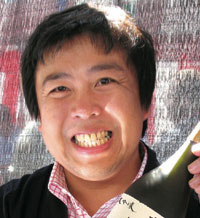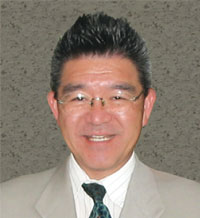What is Undiluted Sake?
Japanese sake contains the highest alcohol level among liquors worldwide, of which the alcohol content of Japanese sake freshly squeezed from fermenting mash is approximately 20 percent. Also, the degree of alcohol content differs according to the ingredients and production method used. However, the alcohol content of Japanese sake sold commercially in the market is approximately 15 percent (above 15 percent, less than 16 percent, according to regulations for selling sake). This is due to the alcohol content adjusted to be a certain amount by adding water prior to bottling and shipping out. The sake before adjusting with water is called “undiluted sake.” According to the National Tax Agency’s “Standards for Manufacturing Methods and Quality Indication for Sake,” “Undiluted Sake” is stipulated as “sake not adjusted (excluding the addition and adjustment of water less than 1% of the alcohol content) by adding water after production.”
In other words, the only condition required to qualify as unfiltered sake is to not add or adjust with water. Therefore, the Junmai type, the Honjozo type that adds distilled alcohol, and any other sake not adjusted with water can all be sold as undiluted sake.
The reason why the alcohol content of sake sold is regulated to be 15 ~ 16 percent is based on the liquor tax applied to Japanese sake. The current liquor tax for Japanese sake is not assessed uniformly across all liquor brands, but based on the alcohol content. More specifically, the standard alcohol content for Japanese sake is above 15 percent, but less than 16 percent, for which the taxes levied per 1 kiloliter (220 gallons) of sake within this range is 140,500 Yen. Also, every time the standard alcohol content is raised/lowered by 1 percent, the taxes levied per 1 percent alcohol content changes by 9,370 Yen (140,500 ÷ 15 = 9,366).
To add alcohol content, discard the fraction of alcohol content; and to decrease alcohol content, round off to the nearest whole number (for Japanese sake with alcohol content below 8 percent, the taxes levied is uniformly 74,910 Yen). Although adjusting with water makes the sake easy-to-drink, undiluted sake to which water would normally not be added is permitted to be adjusted with water within 1 percent alcohol content due to this taxation method. The background behind the emergence of undiluted sake is in part due to the exploration of new demands and diversification, as well as the intention to explore new demands with higher than the standard alcohol content despite adding water. This type of Japanese sake is normally referred to as “highly-concentrated sake.”
In other words, the only condition required to qualify as unfiltered sake is to not add or adjust with water. Therefore, the Junmai type, the Honjozo type that adds distilled alcohol, and any other sake not adjusted with water can all be sold as undiluted sake.
The reason why the alcohol content of sake sold is regulated to be 15 ~ 16 percent is based on the liquor tax applied to Japanese sake. The current liquor tax for Japanese sake is not assessed uniformly across all liquor brands, but based on the alcohol content. More specifically, the standard alcohol content for Japanese sake is above 15 percent, but less than 16 percent, for which the taxes levied per 1 kiloliter (220 gallons) of sake within this range is 140,500 Yen. Also, every time the standard alcohol content is raised/lowered by 1 percent, the taxes levied per 1 percent alcohol content changes by 9,370 Yen (140,500 ÷ 15 = 9,366).
To add alcohol content, discard the fraction of alcohol content; and to decrease alcohol content, round off to the nearest whole number (for Japanese sake with alcohol content below 8 percent, the taxes levied is uniformly 74,910 Yen). Although adjusting with water makes the sake easy-to-drink, undiluted sake to which water would normally not be added is permitted to be adjusted with water within 1 percent alcohol content due to this taxation method. The background behind the emergence of undiluted sake is in part due to the exploration of new demands and diversification, as well as the intention to explore new demands with higher than the standard alcohol content despite adding water. This type of Japanese sake is normally referred to as “highly-concentrated sake.”
原酒とは
日本酒は世界の醸造酒の中で最もアルコール度の高い酒であり、もろみから搾っただけの状態の日本酒のアルコール分は、20%前後にもなる。また、アルコール分の度合いは、使用する原料や製造方法によっても変わってくる。ところが、一般に市販されている日本酒のアルコール分は、概ね15%(15%以上16%未満で、市販酒の規格とされている)になっている。これは、瓶詰して出荷する前に、この程度のアルコール分になるように加水調整を行なっているためで、この加水調整する前の日本酒を「原酒」という。国税庁の「清酒の製法品質表示基準」では、「製成後、加水調整(アルコール分1%未満の範囲内の加水調整を除く)をしない清酒である場合」に、「原酒」という表示ができると規定している。
つまり、原酒である条件は加水調整の有無だけである。したがって、純米タイプの酒でも、醸造アルコールを添加した本醸造タイプの酒でも、加水してアルコール分を調整していないものはすべて、原酒として販売できるわけである。
15~16%というアルコール分が市販酒の規格とされているのは、実は日本酒にかけられる酒税の税率が根拠になっている。現在の日本酒に対する税率は、一律に同一税率を適用する課税方式でなく、アルコール分に応じて定められているからだ。具体的には、まず日本酒の基準アルコール分は15度以上16度未満とし、この範囲内に入る酒の1キロリットル当たりの税金は140,500円とする。そして、この基準アルコール分を1度上下するごとに、アルコール分1度当たりの税額、9,370円(140,500÷15=9,366円)を加算または減算する。ただし、加算する場合はその1度未満の端数のアルコール度数は切り捨て、減算する場合は1度未満の端数は1度分に切り上げるというもの(アルコール分8度未満の日本酒の場合は、一律74,910円)。加水調整には飲みやすい酒にするという意味もあるが、本来は一切加水をしない酒であるはずの原酒に、1%未満の範囲内での加水調整を認めているのも、この課税方式のためである。
原酒が登場した背景には、日本酒の新たな需要開拓や商品の多様化の動きがあるが、最近はさらに新しい需要を掘り起こそうという意図から、加水調整はしているものの基準アルコール分よりも高いアルコール度のものもかなり出てきている。このような日本酒は通常「高濃度酒」と呼ばれる。
つまり、原酒である条件は加水調整の有無だけである。したがって、純米タイプの酒でも、醸造アルコールを添加した本醸造タイプの酒でも、加水してアルコール分を調整していないものはすべて、原酒として販売できるわけである。
15~16%というアルコール分が市販酒の規格とされているのは、実は日本酒にかけられる酒税の税率が根拠になっている。現在の日本酒に対する税率は、一律に同一税率を適用する課税方式でなく、アルコール分に応じて定められているからだ。具体的には、まず日本酒の基準アルコール分は15度以上16度未満とし、この範囲内に入る酒の1キロリットル当たりの税金は140,500円とする。そして、この基準アルコール分を1度上下するごとに、アルコール分1度当たりの税額、9,370円(140,500÷15=9,366円)を加算または減算する。ただし、加算する場合はその1度未満の端数のアルコール度数は切り捨て、減算する場合は1度未満の端数は1度分に切り上げるというもの(アルコール分8度未満の日本酒の場合は、一律74,910円)。加水調整には飲みやすい酒にするという意味もあるが、本来は一切加水をしない酒であるはずの原酒に、1%未満の範囲内での加水調整を認めているのも、この課税方式のためである。
原酒が登場した背景には、日本酒の新たな需要開拓や商品の多様化の動きがあるが、最近はさらに新しい需要を掘り起こそうという意図から、加水調整はしているものの基準アルコール分よりも高いアルコール度のものもかなり出てきている。このような日本酒は通常「高濃度酒」と呼ばれる。
¿Qué es el sake sin diluir?
El sake japonés es el licor con mayor contenido de alcohol del mundo. Recién exprimido a partir de puré fermentado tiene aproximadamente un 20 %. Además, el contenido varía según los ingredientes y el método de producción utilizado. Sin embargo, el que se vende comercialmente en el mercado es de aproximadamente el 15 % (por encima del 15 %, menos del 16 %, según las regulaciones para la venta de sake). Esto se debe a que el contenido de alcohol se ajusta a una cierta cantidad añadiendo agua antes del embotellado y el envío. El sake antes de ajustarlo con agua se llama "sake sin diluir". Según las "Normas para los métodos de fabricación e indicación de calidad del sake" de la Agencia Tributaria Nacional, el "sake sin diluir" se estipula como "sake no ajustado (excluyendo la adición y ajuste de agua de menos del 1 % del contenido de alcohol) añadiendo agua después de la producción".
En otras palabras, la única condición necesaria para que un sake sea considerado sin filtrar es no añadir ni ajustar con agua. Por lo tanto, el tipo Junmai y el tipo Honjozo, que añaden alcohol destilado, y cualquier otro sake que no esté ajustado con agua, pueden venderse como sake sin diluir.
El motivo por el que el contenido de alcohol del sake que se vende está regulado entre el 15 y el 16 por ciento se basa en el impuesto sobre las bebidas alcohólicas que se aplica al sake japonés. El impuesto actual sobre las bebidas alcohólicas para el sake japonés no se aplica de manera uniforme a todas las marcas de bebidas alcohólicas, sino que se basa en el contenido de alcohol. Más específicamente, el contenido de alcohol estándar para el sake japonés es superior al 15 por ciento, pero inferior al 16 por ciento, por lo que los impuestos recaudados por 1 kilolitro (220 galones) de sake dentro de este rango son de 140.500 yenes. Además, cada vez que el contenido de alcohol estándar aumenta o disminuye en un 1 por ciento, los impuestos recaudados por cada 1 por ciento de contenido de alcohol cambian en 9.370 yenes (140.500 ÷ 15 = 9.366).
Para añadir contenido de alcohol, descarta la fracción; y para disminuir, redondea al número entero más cercano (para el sake japonés con un contenido de alcohol inferior al 8 por ciento, los impuestos aplicados son uniformemente 74.910 yenes). Aunque ajustar con agua hace que el sake sea fácil de beber, el sake sin diluir al que normalmente no se le añadiría agua se permite ajustar hasta el 1 por ciento de contenido de alcohol debido a este método de imposición. El trasfondo detrás del surgimiento del sake sin diluir se debe en parte a la exploración de nuevas demandas y la diversificación, así como a la intención de explorar nuevas demandas con un contenido de alcohol superior al estándar a pesar de añadir agua. Este tipo de sake japonés normalmente se conoce como "sake altamente concentrado".
El sake japonés es el licor con mayor contenido de alcohol del mundo. Recién exprimido a partir de puré fermentado tiene aproximadamente un 20 %. Además, el contenido varía según los ingredientes y el método de producción utilizado. Sin embargo, el que se vende comercialmente en el mercado es de aproximadamente el 15 % (por encima del 15 %, menos del 16 %, según las regulaciones para la venta de sake). Esto se debe a que el contenido de alcohol se ajusta a una cierta cantidad añadiendo agua antes del embotellado y el envío. El sake antes de ajustarlo con agua se llama "sake sin diluir". Según las "Normas para los métodos de fabricación e indicación de calidad del sake" de la Agencia Tributaria Nacional, el "sake sin diluir" se estipula como "sake no ajustado (excluyendo la adición y ajuste de agua de menos del 1 % del contenido de alcohol) añadiendo agua después de la producción".
En otras palabras, la única condición necesaria para que un sake sea considerado sin filtrar es no añadir ni ajustar con agua. Por lo tanto, el tipo Junmai y el tipo Honjozo, que añaden alcohol destilado, y cualquier otro sake que no esté ajustado con agua, pueden venderse como sake sin diluir.
El motivo por el que el contenido de alcohol del sake que se vende está regulado entre el 15 y el 16 por ciento se basa en el impuesto sobre las bebidas alcohólicas que se aplica al sake japonés. El impuesto actual sobre las bebidas alcohólicas para el sake japonés no se aplica de manera uniforme a todas las marcas de bebidas alcohólicas, sino que se basa en el contenido de alcohol. Más específicamente, el contenido de alcohol estándar para el sake japonés es superior al 15 por ciento, pero inferior al 16 por ciento, por lo que los impuestos recaudados por 1 kilolitro (220 galones) de sake dentro de este rango son de 140.500 yenes. Además, cada vez que el contenido de alcohol estándar aumenta o disminuye en un 1 por ciento, los impuestos recaudados por cada 1 por ciento de contenido de alcohol cambian en 9.370 yenes (140.500 ÷ 15 = 9.366).
Para añadir contenido de alcohol, descarta la fracción; y para disminuir, redondea al número entero más cercano (para el sake japonés con un contenido de alcohol inferior al 8 por ciento, los impuestos aplicados son uniformemente 74.910 yenes). Aunque ajustar con agua hace que el sake sea fácil de beber, el sake sin diluir al que normalmente no se le añadiría agua se permite ajustar hasta el 1 por ciento de contenido de alcohol debido a este método de imposición. El trasfondo detrás del surgimiento del sake sin diluir se debe en parte a la exploración de nuevas demandas y la diversificación, así como a la intención de explorar nuevas demandas con un contenido de alcohol superior al estándar a pesar de añadir agua. Este tipo de sake japonés normalmente se conoce como "sake altamente concentrado".




